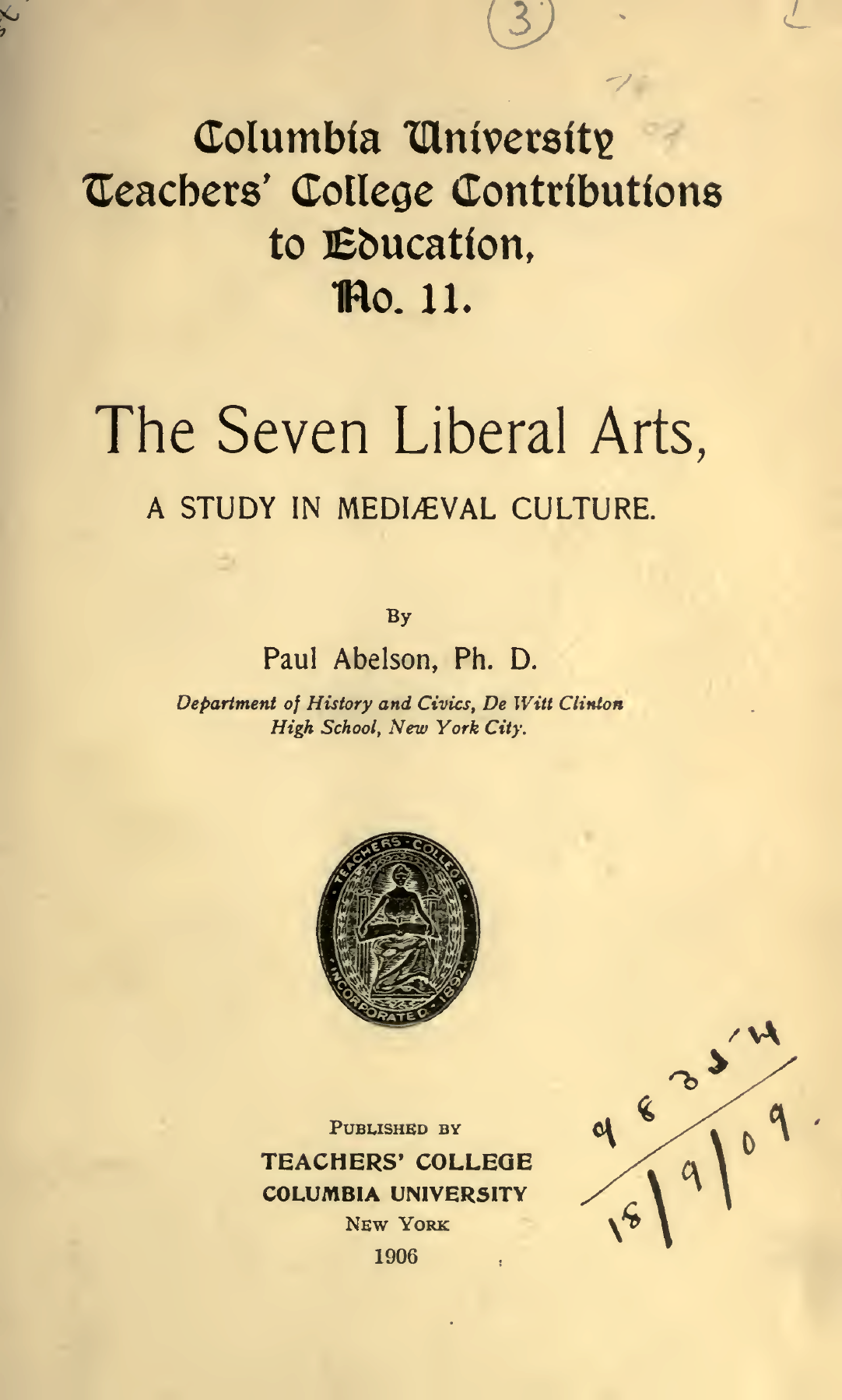CHAPTER V.
Rhetoric.
TECHNICAL STUDY.
GENERAL CONDITIONS.
More than any other of the subjects of the mediaeval curriculum, Rhetoric shows the distinctive characteristics of the age. While in the other branches, grammar especially, the methods and ideals of the later Empire were largely followed, being modified only to meet the changing requirements of new conditions, the study of rhetoric assumed an entirely new character. On the one hand the old practical rhetorical training of the Roman period was almost entirely discarded or was reduced to a mere mastery of the technical rules of the science. On the other hand, one insignificant phase of classical rhetoric the study of the Epistle and “Dictamen” was overemphasized and developed to such an extent as to displace in the curriculum the study of rhetoric proper.
This change was not made without reason. The decadence of the rhetorical schools of Rome was caused by the deadening formalism which resulted from perpetuating the ideal of training orators at a time when the world had no use for orators. In the days of Cicero the training in oratory was in harmony with the spirit of the age. Since its noblest use was then the defense of liberty, his seven works on eloquence were timely treatises indeed. But in the later empire, in spite of changed conditions, this formal training in oratory remained, as we have seen in a preceding chapter, the same as in the period of Cicero. Such an artificial and lifeless system of education could not but be debasing in its influence. Now, as was also shown in a former chapter, while the Christianized Roman world permitted the pagan schools to die, it was not averse to appropriating for its own purposes the essential elements of the culture which these various schools imparted. But it could not, from the nature of things, accept the educational ideal of the ancient world the training of the orator. Therefore rhetoric, the basis of education in the Empire, lost its importance in the middle ages and could no longer be the keystone of the educational arch. (pp. 52-53)
Abelson, The Seven Liberal Arts, a Study in Mediaeval Culture, 1906.

